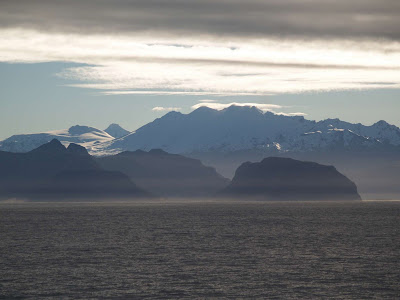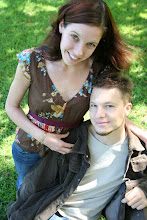What a luxury to take a flight after all those lengthy bus rides! The journey via road from Ushuaia to Buenos Aires takes around 50 hours... and was only $20 cheaper than the 3.5 hour flight. The decision between the two options was not a difficult one to make. Buenos Aires is a fantastic city (12th biggest in the world). In the past it was one of the worlds richest cities, funded by it´s exports of beef, grain and wool. The neighbourhoods of the city are still filled with grand old buildings with corner statues, friezes and cobbled streets. With a population of 13.5 million, and a great deal of European influence, it is very different from the rest of South America, however there are lots of little things that constantly remind you that it is not a first world country yet. About 40% of the population was thrown below the poverty line in the financial crisis that the country experienced in 2001, and many have not been able to improve their situation since this time. In the evenings the streets fill with ¨cartoneros¨ (collectors of cardboard and glass for recycling), hauling their carts along the city´s grand avenues as expensive cars go flashing past. On the trains there are still many street kids and unemployed trying to sell lollies or cards for spare change.

Obelisk in the middle of a 18 lane highway in central Buenos Aires. 
Typical street in down town Buenos Aires
One of the best things about Buenos Aires was that Rebecca was there and we got to hang out together for several days (although much to Bec´s dismay we did not have enough time to stop off at a Telos - aka ¨love hotel¨ - together as a three-some before we parted ways!). However, we did have time to visit a number of the city´s more famous (and possibly less seedy areas). Unbeknown to us, the map provided by the tourist office, although largely correct, has some serious problems in the area of La Boca. This would normally not be too big a problem, except when you have been warned by every local and guide book not to stray from the main tourist path when visiting this working class ¨barrio¨. Despite drawing on our best map following skills, somehow we ended up well and truly off this evasive ¨Caminito¨. Eventually, after discarding the map, we somehow found the brightly coloured, corrugated iron homes of La Boca. The bright streets are the result of the ingenuity of a local artist who would go to the docks to beg incoming ships for their left over paint. The impoverished locals used the small dregs of paint to cover their homes, the result being a rainbow effect such as red window panes, green walls and blue eaves. We decided to walk back to the centre of the city along the river, however were stopped within 50m of ¨Caminito¨ by policeman who were permanently stationed at the fringes of the tourist area to stop them entering the ¨zona peligrosa¨ (dangerous zone)!

Tim in ¨La Boca¨


¨Caminito¨meaning ¨Little Street¨is the only safe place to wander in La Boca 


 ¨La Boca¨is also home to the Boca Juniors Futbol club - about which Argentinians are fanatical!
¨La Boca¨is also home to the Boca Juniors Futbol club - about which Argentinians are fanatical! Another day was spent visiting the barrio ¨Recoleta¨ which is a relatively swish area of town. This was heaven for those of us trying to spot the famed dog walkers. Porteños (the name for people from Buenos Aires) have a love for dogs, and a love for getting someone else to walk them on their behalf. As a result, a common site in the richer suburbs is a young guy walking the streets with a dozen or more dogs on leashes at one time. Apparently some of the amateur dog walkers actually walk their charges, but the more experienced walkers tend to head straight for a cafe, tie the dogs to a railing in a plaza and enjoy a coffee with fellow dog walkers. Although there were many sitings, (including a reasonable amount seen comfortably seated, sipping cappucinos at plaza side cafes!), the photographic opportunities were sadly limited.

These dogs don´t appear to be doing too much walking (their ¨walker¨ was over the road drinking a latte!!


Recoleta is also home to the city´s famous cemetery where many of Buenos Aires rich and famous are laid to rest including several presidents and Evita Peron. The cemetery itself takes up more than a city block and is filled with impressive monuments, extending deep below the ground with original statues carved out of marble and other expensive materials imported from Europe.

Monuments in the Recoleta Cemetary
Our visit to Palermo, the city´s funky, parked area, started off in an amusing manner. The three of us were approached by three young university students who asked us to come with them to their school for an assignment. As we had nothing pressing that we needed to do, we agreed to go with them and see what they were up to. As it turns out, they were part of an advertising school and were supposed to be using their skills in promotion to convince us to accompany them. Turned out to be an interesting form of pre dinner entertainment.
San Telmo is famous for it´s antique markets which we of course visited, but managed to resist buying any of the fabulous old telephones. Unfortunately, the promise of street tango performances went unfulfilled.

Not really what we expected when we were told there were ¨street tango performances!¨
Plaza de Mayo is the city centre and bordered by Casa Rosoda (made pink by the combination of lime and animal blood). Convenieintly, this central plaza was only a short walk from our hostel (Rayuela - awesome new hostel run by 5 friends). Plaza de Mayo is the site of many protests and almost every event of significance that has taken place in Buenos Aires. Today, the mothers and widows of the ¨disappeared¨ during the dirty war, still march in protest every Thursday at 3.30pm

Tim now has a fellow photography fanatic to swap ideas with

Rayuela - our fantastic hostel!

From Buenos Aires, Bec headed off to Patagonia with a strong warning not to use the word ¨coger¨ while we headed off to Iguazu Falls.






















































































